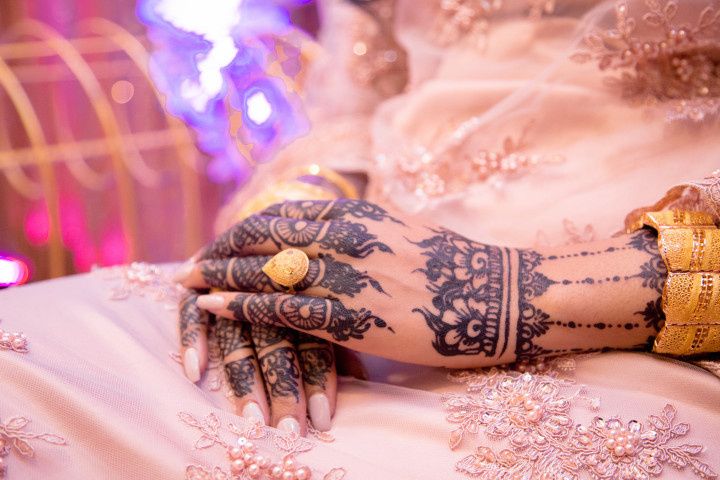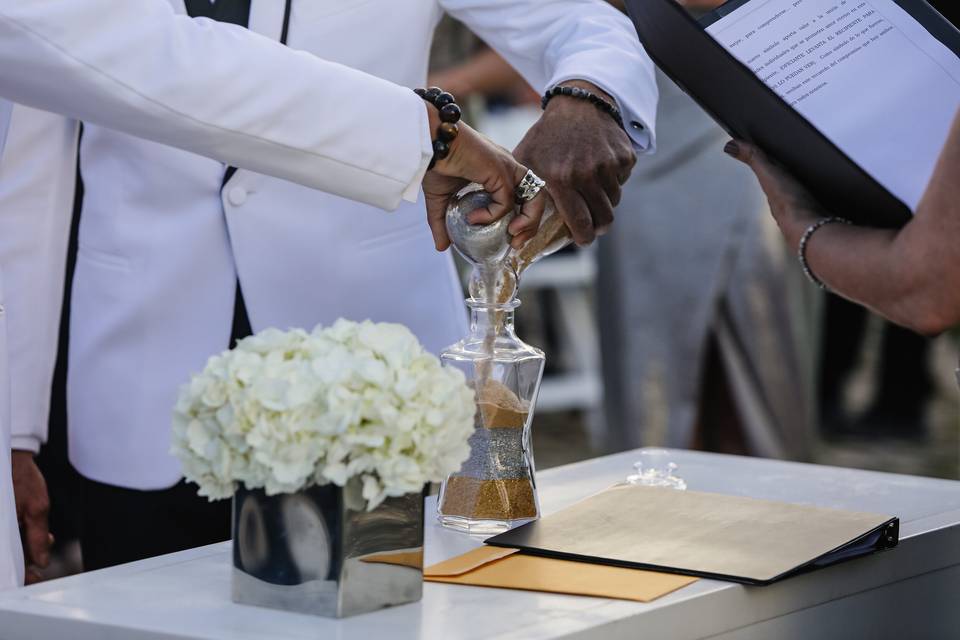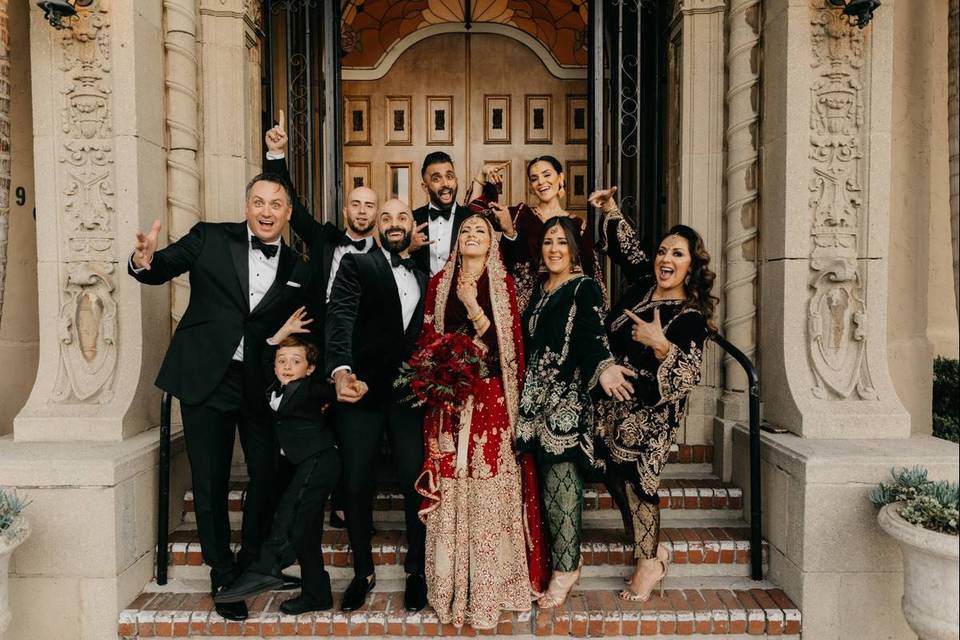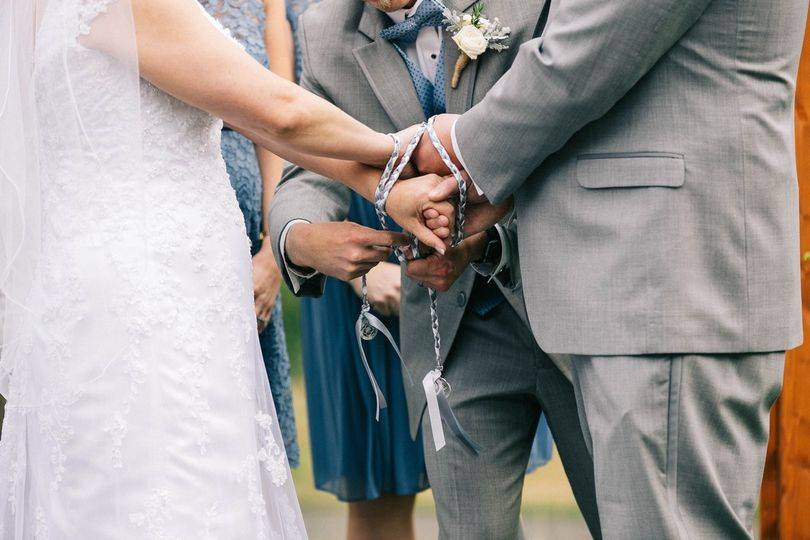Nikah Ceremony: Understanding an Indian Muslim Wedding
Mixing religious and cultural traditions, Indian Muslim weddings, which feature a Nikah ceremony, are full of beautiful and meaningful symbolic rituals.
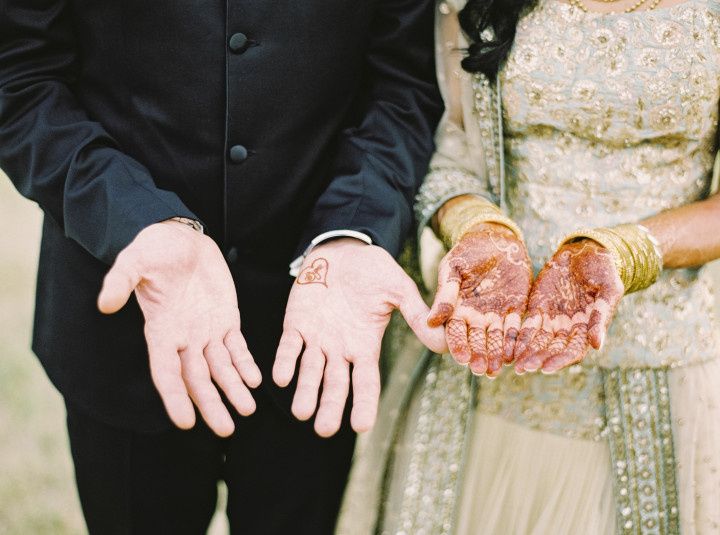
Indian weddings are joyous, colorful celebrations full of rich traditions passed down over centuries. While most Indian-American couples have Hindu roots, Islam is also a popular religion for couples having a traditional Indian wedding. The Nikah ceremony is named for the Arabic word for marriage and is the heart of an Indian Muslim wedding ceremony.
Here’s a quick rundown of Nikah ceremony traditions and what to expect at an Indian Muslim wedding.
Manjha and Mehndi celebrations take place before the Nikah ceremony.
Both the manjha and the mehndi, or henna, are rooted in ancient Indian marriage rituals and are unique to Muslims from South Asia. The manjha is equivalent to the Hindu haldi tradition where the bride-to-be is painted in a turmeric paste given to her by the groom’s family elders. This Indian Muslim wedding tradition is enjoyed with the bride’s closest female relatives and friends and happens a few days before the wedding.
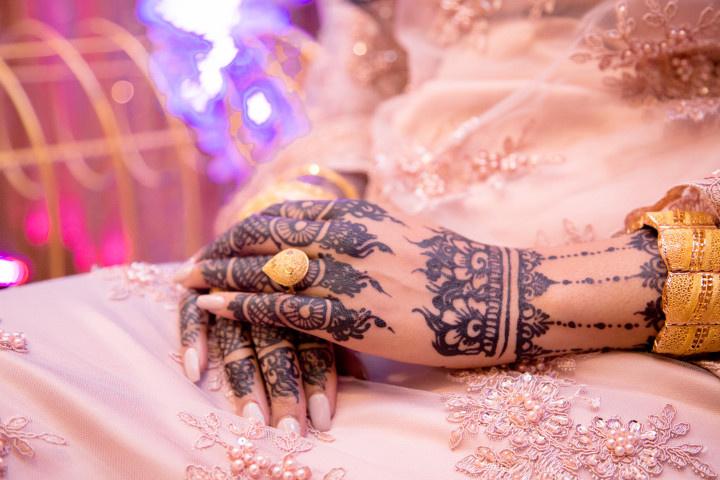
Mehndi is another word for henna, a dark, plant-based dye that’s used to decorate the bride’s hands and feet in preparation for the Nikah ceremony. The night before the wedding, the bride, her bridal party and female relatives celebrate this ritual together with gorgeous, detailed patterns.
Expect to respect mosque customs before your first Indian Muslim wedding.
Muslims worship in mosques, which are generally made up of single gender spaces. For a Nikah ceremony, you will likely be in a men-only or women-only room or section of the ceremony. Before entering, you will also be asked to remove your shoes to prevent dirt or other debris coming into the sanctuary. Women will be expected to cover their heads, while all wedding guests should dress modestly and be sure your shoulders, arms and legs are mostly covered.
The Nikah ceremony is three important steps.
Muslim wedding ceremonies are nearly identical, no matter the culture of the couple, thanks to time-honored religious traditions, but Indian Muslim weddings feature a special addition. The baraat is a South Asian tradition practiced by Muslims, Hindus, and Sikhs alike. The groom and his family members process into the wedding (often on a horse!) to much fanfare. The family is given sweets and the groom shares a sherbet with the bride’s brother.
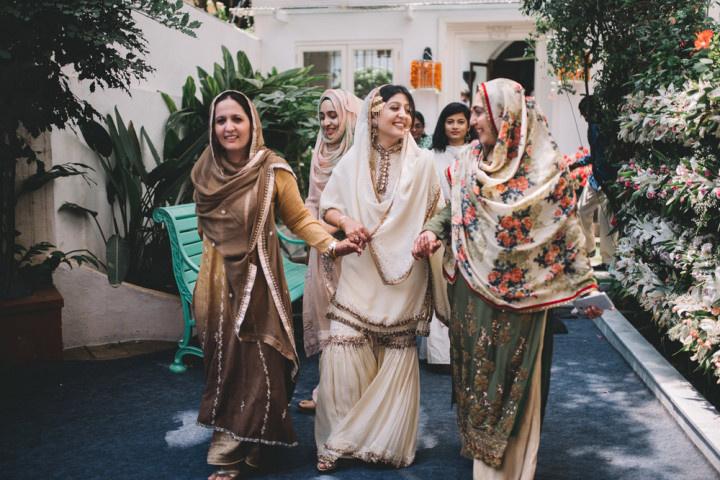
Before the couple is even allowed to see other, a mehr, or symbolic presentation of gifts or money, is given to the bride by the groom. Some modern couples see the bride’s engagement ring as the mehr and any additional gifts offered at this time to be more ornamental, rather than substantive.
Islam religious leaders, called Imams, must serve as officiants for Indian Muslim weddings. After the mehr, the couple agrees to be married by saying qubool hai three times each when asked by the Imam.
Next, the Nikah-Nama, which is a binding social contract between the couple and their Muslim faith, is read aloud at this time by the Imam. The couple agrees to the terms of the contract and signs it during their ceremony as their guests look on. The Imam gives a short sermon, reads from the Koran, and the couple is now officially married.
Arsi Mushaf is the first time the couple looks at each other as husband and wife during their Indian Muslim wedding. They are separated by a mirror and a Holy Koran is held. Keeping with Indian traditions, the couple may also exchange garlands at this time.
Savaqah is the final part of the Nikah ceremony. As the couple leaves the mosque, guests shower the bride with coins to wish her luck.


